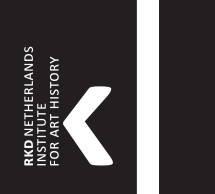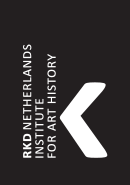3.2 Engravers and Portrait Painters
After these mannerist examples, with Dutch and Flemish influences that cannot be rigorously separated, we turn to a group of Dutch-schooled engravers, whom we will enumerate only briefly: Daniel Block, who was born in Stettin in 1580, hailed from a Utrecht family.1 In 1636Willem Hondius (c. 1598/99-in or before 1660) [1] travelled from The Hague to Danzig, where he received ample work from the Polish kings and the nobility [2]. He was the teacher of Steven de Praet [3]. Jeremias Falck (c. 1610-1677) [4], who was born in Danzig and worked extensively in the Northern Netherlands and Sweden, was a product of the school of Cornelis Bloemaert the Younger.2 David Loggan (1634-1692) went to England.3

1
Willem Hondius after Anthony van Dyck
Portrait of Willem Hondius (1598-1652/1658)
Whereabouts unknown

2
Willem Hondius after Abraham van Westerveld
Portrait of Bohdan Khmelnyckyi (1595-1657), chief of the Ukrainian Cossacks, dated 1651
Warsaw, Muzeum Narodowe w Warszawie

3
Steven de Praet after Willem Hondius
The Cabel Car in Danzig, c. 1644-1646
Gdańsk, Muzeum Narodowe w Gdańsku
The greatest demand from abroad was always for Netherlandish portrait painters, and the rulers were the first to take notice of them. The printmakers whom we just named were primarily engravers of portraits. In this connection we can also point to Hendrick Goltzius (1558-1617), who in 1583 portrayed two Polish noblemen who were visiting the Netherlands [5-6].4 When Ladislaus Sigismund III travelled to the Netherlands in 1624,5 he had himself portrayed by Pieter Soutman (c. 1593/1601-1657) (pictures in Schleissheim [7]6 and Stockholm [8]7 ) and awarded him the title of Polish court painter. We are not sure whether Soutman travelled to Poland. In any case, he cannot have been there for long, as we encounter him back in Haarlem in 1628.8

4
Jeremias Falck after Daniel Schultz
Portrait of prince Bogusław Radziwiłł (1620-1669), 1654 (dated)
Braunschweig, Herzog Anton Ulrich-Museum

5
Hendrick Goltzius
Portrait of Balthasar Báthory de Somlyó (1560-1594), 1583 (dated)
Cambridge (England), Fitzwilliam Museum, inv./cat.nr. P.7349-R

6
Hendrick Goltzius
Portrait of Stanisław Sobocki (1556-after 1600), 1583 (dated)
Rotterdam, Museum Boijmans Van Beuningen, inv./cat.nr. BdH 24125 (PK)

7
after Pieter Soutman
Portrait of King Sigismund III Vasa of Poland (1566-1632) in coronation robe, c. 1642
Munich, Bayerische Staatsgemäldesammlungen, inv./cat.nr. 984

8
attributed to Cornelis de Vos
Portrait of Sigismund III Vasa (1566-1632), King of Poland and Sweden, c. 1625
Mariefred, Gripsholm Slott
Pieter Danckerts (1605-1660)9 served two Polish kings as portrait painter and architect. He appears to have gone to Poland in 1634, as both a portrait of his parents [9-10] and the earliest Polish portrait of Adam Kazanowski [11] (engraved by Willem Hondius) date from that year.10 This same gentleman was portrayed in 1648 by Maerten Couwenburch, this being another portrait that was engraved by Hondius [12].11 Danckert’s architectonic key work is the Saint Casimir chapel in the cathedral of Wilna (Vilnius), which he also decorated with frescos.12

9
Pieter Danckers
Portrait of Cornelis Danckerts de Rij (1561-1634), dated 1634
Brussels, Koninklijke Musea voor Schone Kunsten van België, inv./cat.nr. 44

10
Pieter Danckers
Portrait of Oede Seyl (c. 1571-after 1634), 1634 (dated)
Brussels, Koninklijke Musea voor Schone Kunsten van België, inv./cat.nr. 45

11
Pieter Danckers
Portrait of Adam Kazanowski (1599-1649), 1638 (dated)
Kraków, Zamek Królewski na Wawelu, inv./cat.nr. 6196

12
Willem Hondius after Maerten Couwenburch
Portrait of Adam Kazanowski (1599-1649), 1648 (dated)
Cambridge (England), Fitzwilliam Museum, inv./cat.nr. P.7411-R
Franz Kessler (1580-after 1650), who studied with Geldorp Gortzius in Cologne and was therefore exposed to the Netherlandish manner, left this city in 1635, being German Reformed, to head for Danzig. The works of his Danzig phase [13-15] are freer and airier than the stiff portraits of his Cologne years.13 Through interventions on the part of Polish emissaries, portraits of English rulers painted by Daniël Mijtens came to be shipped to Warsaw.14

13
Franz Kessler
Portrait of Adolphus Munster, dated 1645

14
Franz Kessler
Portrait of Maria Munster, dated 1645

15
Franz Kessler
Portrait of Nikolaus Konstantin (?) Giese, dated 1642
Wilanów (Warsaw), Muzeum Pałacu Króla Jana III w Wilanowie
Portrait painting in Danzig and Poland was therefore decidedly Dutch in character, at least in so far as the indigenous painters recognized the superiority of foreign ones. The portraits by Salomon Wegner (1590-1645/1649) (engraved by Falck) are already Netherlandish in conception [16].
The Danzig painter Adolf Boy (1612-1680), secretary to Ladislaus IV, had his portraits engraved by both Hondius and Falck [17-18]. Boy was not exclusively a portraitist. His ‘contact with Dutch art’ was also evident in his altarpieces [19] and genre scenes.15 Boy’s son-in-law August Ranisch (c. 1620-1653), on the contrary, was more closely inspired by Van Dyck’s paintings [20].

16
Jeremias Falck after Salomon Wegner
Portrait of Daniel Dilger , reverent in Danzig (1572-1645), 1648 (dated)
Amsterdam, Rijksprentenkabinet, inv./cat.nr. RP-P-OB-50.569

17
Willem Hondius after Adolf Boy
Coronation portrait of King John II Casimir Vasa (1609-1672), 1649 (dated)
Warsaw, Biblioteka Narodowa, inv./cat.nr. G.219/Sz.1

18
Jeremias Falck after Adolf Boy
Portrait of Constantin Ferber (1580-1654), mayor of Gdansk, c. 1658-1663
Warsaw, Biblioteka Narodowa, inv./cat.nr. G.3057/I

19
Anonymous Poland 1637
Altar of Saint Joseph: The Christ child with Saint Joseph (above), Jesus who hands Peter the keys of the gate of heaven (middle) and the calling of Peter (under, predella), 1637
Oliwa, Archikatedra Oliwska

20
Andreas Hoffman
Saint Nicholas consecrated bishop of Mira by Christ and the virgin Mary, 1647
Gdańsk, Kościół św. Mikołaja w Gdańsku
Notes
1 [Van Leeuwen 2013] Daniel Block was a painter, not an engraver. It is possible that Gerson confused him with another artist, David van den Blocke (died December 1640), sometimes also called Daniel van den Blocke, a brother of Isaak van den Blocke. David van den Blocke worked in Danzig for a long time (1618-1640) (RKDimages 235200).
2 [Van Leeuwen 2013] Falck fell under the influence of French, Flemish and Dutch artists in Paris, where he stayed between 1639 and 1645, and went to Amsterdam in 1656 after working in Copenhagen (Saur 1992-, vol. 36 (2003), p. 339). It is not certain that he was trained by Cornelis Bloemaert, who left Paris for Rome in 1633.
3 [Van Leeuwen 2013] Loggan went to England after spending seven years in the Netherlands (1656-1663).
4 [Gerson 1941/1983] Van Mander/Floerke 1617/1906, pp. 256-257; Hirschmann 1921, nos. 146-147.
5 [Van Leeuwen 2013] Gerson clearly mixed up Sigismund III (1566-1632) and his son, Prince Ladislaus Sigismund (1595-1648), who ruled as King Ladislaus IV (1632-1648). It was the son who took the trip to the Netherlands in 1624 (Antwerp 1997 and Szmydki 2002).
6 [Van Leeuwen 2013] The painting Gerson mentions is now considered to be an old copy after Soutman, made in Poland around 1642. It is no longer in Schleissheim but in Schloss Neuburg (Barrett 2012, p. 147, no. PC-2).
7 [Van Leeuwen 2013] Kerry Barrett omits a version by or after Soutman in Stockholm (Barrett 2012). The only important portrait with a connection to the Netherlands that depicts Sigismund III and belongs to a Swedish public collection, is an equestrian portrait attributed to Cornelis de Vos in the Nationalmuseum in Stockholm, which must be the painting Gerson refers to (communication by E.L. Karlsson to S. Erkens, 14 August 2013).
8 [Van Leeuwen 2013] According to Van Thiel-Stroman, Soutman may have been in Poland from 1624 until 1628, or else only for a short visit in October 1628 (Van Thiel-Stroman 2006, p. 305).
9 [Van Leeuwen 2013] In Hofman 1970, p. 89, it is clearly established that Pieter Danckerts was buried in the Westerkerk in Amsterdam on 15 december 1660.
10 [Van Leeuwen 2013] The earliest Polish picture of Danckerts that we could find is a portrait of Kazanowski of 1638, not 1634. We therefore assume that Danckerts moved to Poland between 1634 and 1638. The print (probably) after Danckerts is now considered to be by Falck, not Hondius (RKDimages 230910).
11 [Van Leeuwen 2013] No paintings by Maerten Couwenburch are known to us today.
12 [Van Leeuwen 2013] The frescos in this chapel are no longer considered to be by Danckerts (Saur 1992-, vol. 24 [2000], p. 80). According to J. Tylicki the original frescos were made by Bartholomäus Strobel in 1635-1636, but these were already destroyed during the war with Russia during the 17th century. The now existing frescos date from the reconstruction of the 1690s and were almost certainly done by Michelangelo Palloni of Florence (email J. Tylicki to S. Erkens, 28 August 2013).
13 [Gerson 1942/1983] For example, Auction New York 1932, nos. 24-25.
14 [Gerson 1942/1983] Stopes 1910, pp. 161 and 163. [Van Leeuwen 2013] Stopes mentions e.g. a full-length portait of King Charles I delivered to John Tanadiek, an ambassador from Poland, delivered 1633-1634, No trace of such paintings can be found in Poland today (email from J. Tylicki to S. Erkens, 28 March 2013).
15 [Van Leeuwen 2013] Gerson quotes Drost 1938, p. 139 (‘seine Fühlungnahme mit holländischer Kunst’). For an attempt to reconstruct the oeuvre of this rather feeble artists, see Tylicki 2004.

